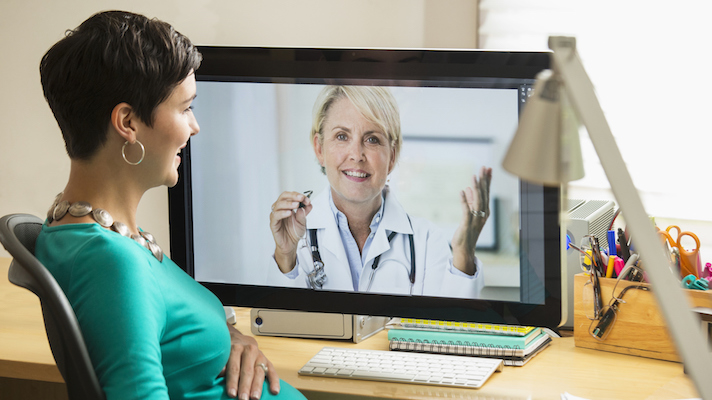Telemedicine & Grandstream: What Solutions Are Best?

Even before COVID-19 and the unforeseen consequences it had on daily life & safety, telemedicine was on the rise. Telemedicine allows for patients to have more convenient access to healthcare and provides a higher level of health safety for patients and providers. Healthcare is beginning to weigh the benefits, including improved care & patient satisfaction, lower hospital readmissions, and higher profitability. Approximately 74% of patients in the United States feel comfortable utilizing telehealth services; therefore, hospitals & clinics must be fully equipped to handle the transition to telemedicine/telemental health.
Grandstream Networks provides comprehensive, remote solutions for healthcare, acting as a one-stop-shop to set up an entire telehealth workspace. With Grandstream, it is easy to put together a high-performance work station for doctors & nurses, especially with the time crunch that COVID-19 has put on business decisions.
Equipment Needed for Telemedicine
When a practice begins transitioning to telemedicine – or is even in the midst of providing this service – they must ensure that they possess necessary telecommunications technology, as well as additional equipment.
- Telemedicine Cart: A telemedicine cart acts as the storage and transportation system for telemed and is quite similar to a portable desk. This cart can easily be moved throughout the office, allowing different practitioners access to the tools they need when conducting e-visits. This also enables mobility – if one area of the office gets too noisy or busy, the clinician can move to a quieter, more private location. The cart would be equipped with a computer/laptop, camera, necessary medical devices, and a cordless phone handset. For healthcare facilities with dedicated offices for conducting e-visits, a stationary desk or “kiosk” can be set up with the same devices as the cart. For these scenarios, a desk phone or video phone may be preferred over a handset.
- Video Camera: E-visits rely on both audio and video communication on behalf of both the patient and the provider. For basic check-ups and sick visits, a desktop video phone works quite well, allowing for face-to-face care. Choosing a video phone with HD video is key since patients may ask for healthcare providers to take a closer look at a problem area. The Grandstream GXV series Android IP Video Phones are popular within the medical community because they allow medical professionals to communicate with patients via Android apps, SIP platforms, or direct IP calls. The GXV3380 provides users with a large image of the patient due to its 8” 1280×800 capacitive screen, while its 2-megapixel camera ensures high video quality and clarity.
- Web Meeting Platform: A web meeting service is key to communicating with remote patients. Grandstream’s Cloud-Based IPVideoTalk platform is ideal because it allows medical professionals to chat with patients through a variety of different devices: PCs, laptops, and Android/iOS devices. Providers do not need to feel tied down to their e-visit workspace or telemed cart, allowing them to even take patient calls from their home office. IPVideoTalk Meeting plans are available, but offices can test the platform out with a free basic plan that supports up to 50 meeting participants.
- Wi-Fi Cordless Phones: A telemed cart should include a cordless Wi-Fi phone so that critical medical staff can always be reached. The Grandstream WP series, including the new WP810, is perfect not only for a telemed cart that may be moved throughout an office but also hospitals where staff will roam & need to make/take calls. Since hospitals and offices are Wi-Fi environments, this phone will work no matter where they go in the building.
- Video Conferencing Equipment: While video phones & webcams are best for patient communication, video conferencing equipment is best for remote staff meetings. With teams spread out between different buildings, floors, and offices, video conferencing will allow them to meet and discuss medical procedures and patient care. This also allows doctors & nurses working remotely from home to connect with staff still at work. The Grandstream GVC series of room-based video conferencing devices offer a traditional, formal conferencing device for any SIP or H.323 platform, as well as IPVideoTalk (which is ideal when medical teams want to hold remote meetings). The GVC3210 is a top-of-the-line Android option that is both price-friendly and packed with high-end features, including Noise-Shield Technology to block out distractions and full access to the Google Play store.
Now is the right time to work with healthcare providers to ensure that their workplaces, including home offices, are ready for an influx in telemed. While this trend has most definitely increased during the pandemic, it is one that is going to continue to expand after COVID-19. To learn more about Grandstream healthcare solutions, contact an 888VoIP Channel Account Manager at 888-864-7786 or by emailing sales@888VoIP.com.

